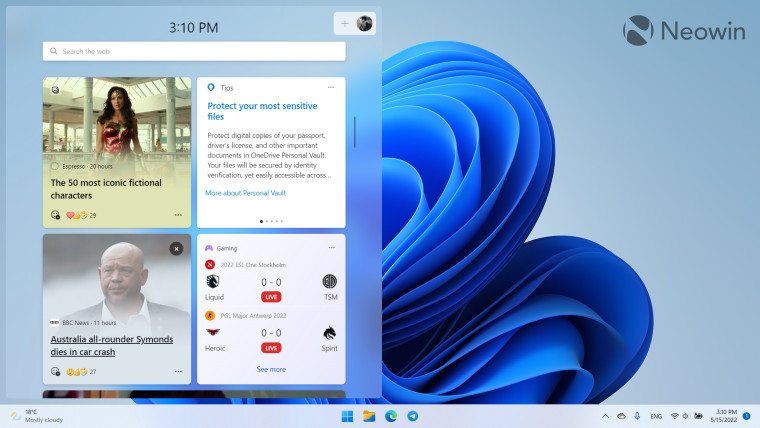Windows App SDK is a set of tools and APIs that developers can use in their Windows app in order to provide "consistent" functionalities across various devices utilizing Windows 10 (version 1809 and higher) and Windows 11. It is important to understand that it does not replace existing app types such as .NET or Windows SDK, it just provides a unified toolset of APIs that can be leverage to complement your existing app. Today, Microsoft has released version 1.2 of the Windows App SDK with a lot of new features.
The highlight of this release is perhaps the ability for third-party developers to create Widgets for their Win32 apps in Windows 11 Insider previews and test them locally. This is something Microsoft said that it was working on back in May and released some more information just over a month ago too. Interested developers can refer to this documentation for further guidance.
Windows App SDK 1.2 also enables developers to leverage WinUI 3's latest media playback controls. They can also take advantage of Microsoft's Azure Communication Services on the cloud to add voice and video calling capabilities to their app. This is the same technology used by Microsoft Teams.
HDR and Auto Color Management (ACM) are now supported via Windows App SDK's DisplayInformation class as well. It enables client applications to monitor application view changes with relative ease. And if you're on Visual Studio 17.3 Preview 2 or later, another interesting item is the ability to develop natively for the Arm64 architecture.
Other updates include trimming for .NET apps, Dynamic Refresh Rate (DRR) in Windows 11, and an AppNotificationBuilder component to easily create and define notifications. Microsoft has also emphasized that Windows App SDK 1.2's x64 binary footprint is 11% smaller than version 1.1.5.
In terms of what's next, Microsoft hasn't noted anything specific. It has just mentioned that it is working with development partners to get their apps migrated to WinUI 3 and Windows App SDK. This is something that the company has been doing as early as last year when it encouraged developers to migrate from Universal Windows Platform (UWP) to Windows App SDK.



3175x175(CURRENT).thumb.jpg.b05acc060982b36f5891ba728e6d953c.jpg)
Recommended Comments
There are no comments to display.
Join the conversation
You can post now and register later. If you have an account, sign in now to post with your account.
Note: Your post will require moderator approval before it will be visible.